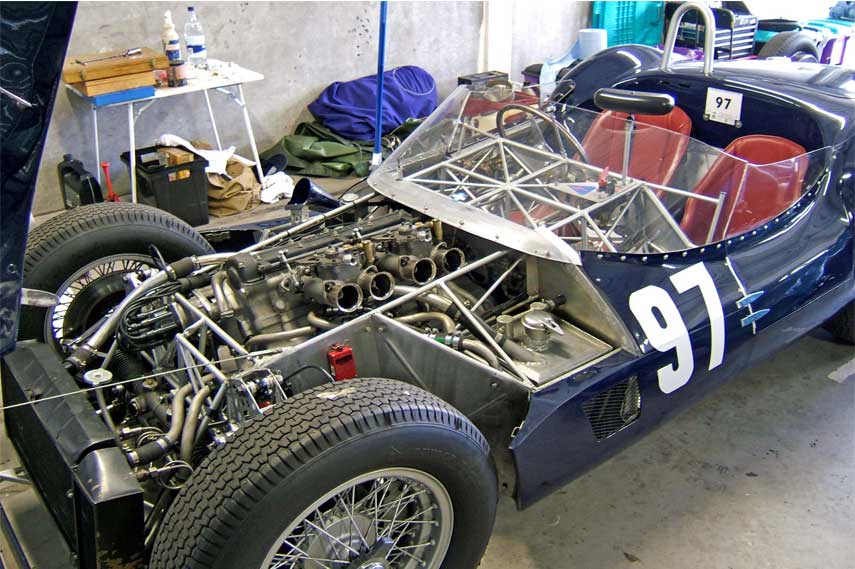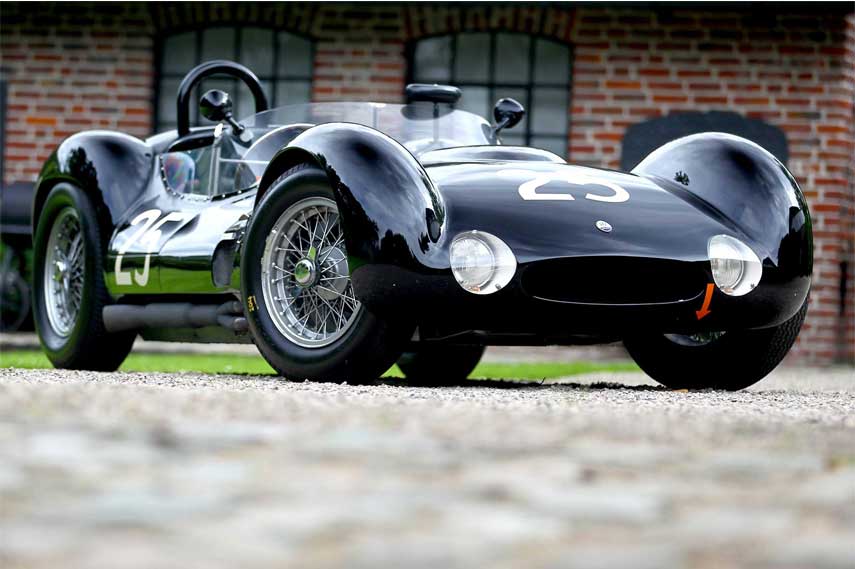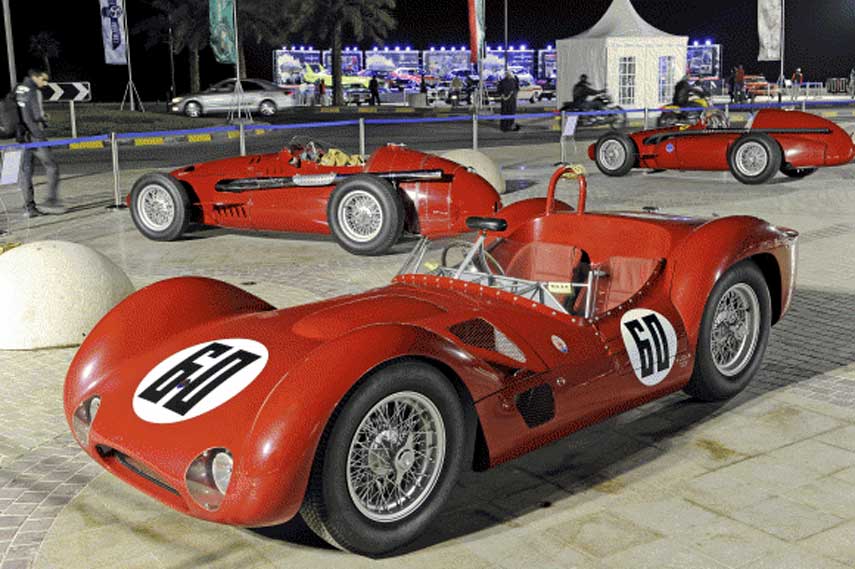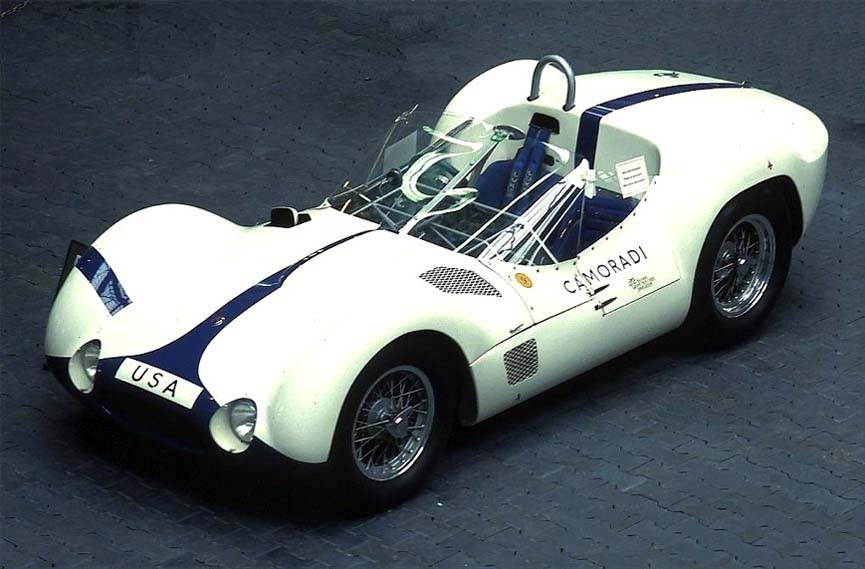Maserati Birdcage - Challenging the Greats Despite Reliability Issues
Maserati Birdcage, or Maserati Tipo 61, which was its official name, was one of the most innovative and elegant cars of its time, but still strong enough to be very competitive on the racing tracks.
Birdcage – an innovative new concept
Produced between the years of 1959 and 1961, Maserati Birdcage had five different models, all based on an intricate multi-tubular frame concept with perfect aerodynamics and a 50/50 front-to-back weight distribution. All of them were made for racing events, including the famous 24 Hours of Le Mans.
The nickname ‘Birdcage’ for this Maserati model comes from the fact that the tubular space frame chassis was made out of around 200 chrome-molybdenum steel tubes, different in thickness and length, all welded together. That construction method provided more rigid, but at the same time lighter chassis than that of the other sports cars of the time, and that particular detail proved to be an advantage on the track. Another innovation was the windscreen based into the bodywork with which Maserati reduced the effect of the new rules demanding a tall windscreen introduced at Le Mans.

Maserati Birdcage Tipo 61 engine and its unique design
Light, yet firm navigation of the Birdcage
The designer of this popular, classic car was Giulio Alfieri. Maserati Birdcage Tipo 61 was a two-seat spyder, with a 2.9L four-cylinder engine of 2890cc and 6800rpm, placed well back in the chassis and canted at 45 degrees. That kind of mounting reduced the height of the body, allowing for a lower center of gravity. Tipo 61 and all other models later derived included independent front suspension, four-wheel disc brakes, and five-speed transmission. The wheelbase had 2.2m with a curb weight of 600 kg.

Black beauty – Maserati Tipo 61
Stirling Moss and Camoradi made the Maserati Birdcage famous
The legendary Stirling Moss was the first driver to win the Delamare-Deboutteville Cup, the support race of Rouen Grand Prix, with Tipo 61 in 1959. That success quickly attracted the attention of Lloyd Casner, the owner of the Camoradi team. In the 1960 24 Hours of Le Mans, Camoradi entered with three Maserati Birdcages, turning a lot of heads, but without any success in the event.

Classic Maserati Tipo 61 Birdcage ready for racing
Despite its competitiveness, the Maserati Birdcage Tipo 61 was pretty unreliable and was often forced to retire from the race due to problems with drivetrain. The Tipo 61 was never the winner of 24 Hours of Le Mans, but in 1960 and 1961, it won the 1000 km of Nurburgring race, beating Ferrari, Porsche, and Aston Martin. In 1960, the drivers were Stirling Moss and Dan Gurney, while in the following year, Lloyd Casner and Masten Gregory were behind the wheel of the Maserati Birdcages. Interestingly, that was the last victory for Maserati at Nurburgring.
Later models of the Maserati Birdcage scored some considerable results in various racing competitions, mainly in the United States, proving that this car was capable of bigger achievements, had it only been more reliable.
Video : Classic Maserati Birdcage Tipo 61
Maserati Birdcage Tipo 61 – the best references and tributes
Dan Gurney, the famous American driver, race-car constructor and team owner, once said: “Great balance, the car is perfectly sprung and the brakes are just right for its power and weight. The adhesion to the track is just fabulous”.
Sir Stirling Moss, one of the people who made the Maserati Birdcage famous, described this fabulous car with these words: “A fabulous car – light, very agile, with fantastic brakes, super easy for steering, enormous torque, and good power”.

Sir Stirling Moss with Maserati Birdcage in Modena, 1960
Birdcage 75th – honour to classic Maserati Birdcage
In 2005, Pininfarina designed the Maserati Birdcage 75th concept car to celebrate and honor the classic Maserati Birdcages of the sixties, as well as the 75th anniversary of Pininfarina. A modern car – the Maserati MC12 is available only in white and blue as a tribute to the Tipo 61 and the Camoradi racing.

Maserati Birdcage 75th
Photos: wikipedia.org, gearheadsandmonkeywrenches.tumblr.com, conceptcarz.com, italiaspeed.com.



